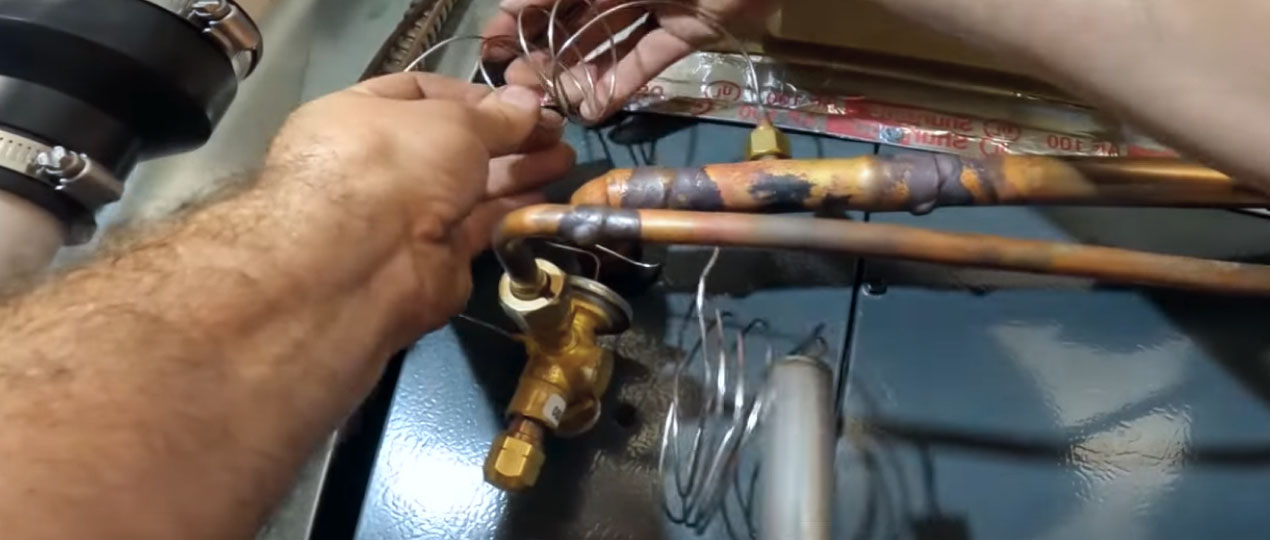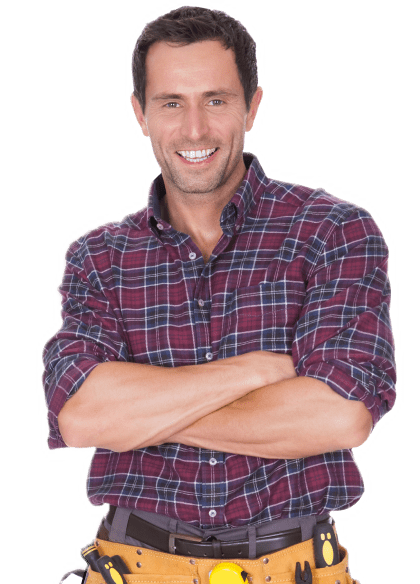
Achieving top home comfort depends on routine HVAC maintenance, and one primary factor that gets overlooked is a thermostatic expansion valve. If you figure out how to inspect and perform a replacement, you can boost energy efficiency, diminish utility bills, and make certain a more consistent indoor climate.
If you are curious about how does a thermostatic expansion valve work or simply want to know when to schedule an adjustment, we will help you tackle the central points. Our tips are created to entrust DIY enthusiasts and cautious homeowners, so you can decide if you’d like to handle an issue yourself or seek professional assistance.
Regular attention to these details can extend the life of your AC unit. However, sometimes the best thing to do is to call for expert services. If you find your system exhibiting certain symptoms, such as irregular temperature control or abnormal refrigerant usage, a cost might be the least of your concerns.
What does a thermostatic expansion valve do in your AC system
The process of keeping your air conditioner running smoothly relies on how well you maintain a thermostatic expansion valve. A TXV helps regulate the refrigerant flow inside the cooling loop, thus warranting your comfort at home without driving up energy costs. Comprehending how to adjust thermostatic expansion valve controls is meaningful if you want your unit to operate at top performance.
What is a thermostatic expansion valve (TXV)?
It is a precise metering device that regulates the amount of refrigerant entering the evaporator coil. Thermostatic expansion valves are created to track the temperature of the refrigerant as it exits the evaporator, adjusting flow accordingly. It keeps the evaporator coil from becoming overloaded with liquid refrigerant. It preserves decisive heat exchange and prevents the evaporator from becoming flooded, which causes poor cooling performance.
How the TXV regulates refrigerant flow
When homeowners ask about the process of working, the short answer is that it responds to superheat levels. The superheat refers to the difference between the evaporator outlet temperature and the refrigerant saturation temperature. As it shifts, the TXV’s internal diaphragm and sensing bulb open or close the valve to meter more or less refrigerant into the evaporator. That’s why adjustment is so meaningful: it tailors the system’s cooling capability to the particular demand.
Common symptoms of a faulty TXV
One of the most popular and worrying questions is how to notice when your AC has a failing TXV. A malfunctioning thermostatic expansion valve results in inefficient cooling, erratic temperature control, and a general decline in the system’s performance. If you see these early indicators, you enable proactive maintenance before minor issues escalate into too expensive repairs.
Faulty ones often show these indicators:
- Sudden spikes in energy consumption When your utility bills start rising unexpectedly, it might be due to the AC system compensating for inefficient refrigerant flow. This inefficiency causes the compressor to work harder than normal, draining extra energy. The increased electrical load drives up costs and may shorten the lifespan of the equipment with putting continuous stress on its components.
- Poor or uneven cooling across different rooms In some areas of your home, you are able to notice that the temperature feels different from others, resulting in hot and cold spots that disrupt comfort. Such imbalance can be caused by improper refrigerant distribution because of a failing TXV, which struggles to upkeep the proper flow.
- Frost buildup on the evaporator coil Accumulation of frost or ice on the evaporator coil can indicate that the refrigerant isn’t being properly regulated. It conducts inadequate heat absorption. Such a buildup is the result of a malfunctioning TXV that fails to adjust refrigerant flow accurately and compromises cooling performance.
- Higher-than-usual humidity levels indoors When your home begins to feel muggy despite the air conditioning running, it could be a sign that the TXV is not operating as it should. Improper valve performance disrupts the cooling cycle, diminishing the ability to dehumidify the indoor air effectively.
These issues can escalate without timely thermostatic expansion valve replacement. Before investing in a new TXV, you should conduct a careful inspection to confirm the diagnosis. If you are unsure how to adjust it or interpret these signs, seeking professional assistance is the safest route.
How to inspect the TXV for issues

Knowing how to identify early warning signs of a malfunctioning thermostatic expansion valve helps you stay ahead of potential breakdowns. Systematically examine the system so homeowners can gauge refrigerant levels, detect physical wear, and verify if an adjustment is necessary. Early detection often translates into smaller repair bills and improved reliability.
A quick overview of the inspection process:
- Initial Visual Exam Begin by locating the thermostatic expansion valve, typically near the evaporator coil. Look for any obvious signs of corrosion, oil residue, or loose fittings. Gently wipe away dust or debris to see if the valve or the connecting lines are wet or damaged.
- Assessing Refrigerant Lines Use a reliable gauge to check for abnormal pressure fluctuations. If the high or low side pressures stray from recommended levels, you may need a replacement or a simpler fix, such as tightening connections. Also watch for any unusual hissing or whistling sounds.
- Sensing Bulb Evaluation Warrant the sensing bulb is properly clamped and insulated. A loose or misplaced bulb results in inaccurate temperature readings and impacts settings. Check for wear on the bulb’s insulation and reposition if necessary.
When you have completed the inspection, compare your findings against standard operating parameters for your AC model. If the data suggests an imminent issue, such as a restricted refrigerant flow, further diagnostics or a full thermostatic expansion valve cost assessment can be warranted. A decision between repair or replacement will depend on practicality and budget.
Replacing a faulty TXV: a step-by-step guide
Sometimes, a thermostatic expansion valve adjustment is not enough to fix persistent issues. If you have gone through the troubleshooting stages and confirmed that the valve is irreparably faulty, follow our lifehacks to safely remove the damaged part and install a replacement without jeopardizing other components.
Preparing for TXV replacement
Before any work begins, make sure you have the right tools and protective gear. Double-check your new TXV is the correct model for your unit. Confirm the thermostatic expansion valve price and verify that it meets OEM specifications. You will also need proper vacuum equipment, a torque wrench, and the correct gauge set to handle the refrigerant. If you are uncertain about the operation or the specific requirements of your AC, consult your user manual or a qualified technician.
Removing the old TXV without damaging the system
First, shut off the power to the AC system. Carefully remove any refrigerant as per EPA guidelines or local regulations. Isolate the segment of tubing around the old TXV by sealing off the rest of the system to prevent moisture infiltration. Disconnect the sensing bulb from the suction line and unbraze or unscrew the old valve. Be mindful of where the thermostatic expansion valve is located in relation to other parts to avoid accidental damage.
Correct thermostatic expansion valve installation
Place the new valve in the exact orientation the old one occupied. Proper installation includes reattaching the sensing bulb securely to the suction line. Seal connections meticulously with brazing rods or high-quality fittings, depending on your AC’s design. Double-check all gaskets and O-rings to prevent leaks, and make sure correct alignment for optimal refrigerant flow.
Testing the system after TXV replacement
Once the valve is fitted, perform a thorough vacuum pull and recharge the system with the recommended refrigerant type and quantity. Activate the AC and check the superheat and subcooling values to confirm you have the right balance. If you need to know how to adjust settings, consult your AC manual or a trained technician. Finally, verify there are no unexpected leaks or pressure drops, and that your home’s rooms are uniformly cooled.
When to call a professional for TXV repair or replacement
A knowledgeable DIYer can manage routine checks and simple adjustment, but certain situations are better left to trained experts. If your air conditioner repeatedly cycles on and off or experiences constant refrigerant loss, it’s time to call a certified HVAC technician. They have the tools and experience to conduct an assessment, discuss the cost and possible labor fees, and guarantee the job is done right. Moreover, our professionals provide warranties on parts and labor, adding peace of mind in case an unforeseen issue arises. Whether you are uncertain about how to adjust a thermostatic expansion valve or you need clarifications on a replacement, expert help can save time and avert costly mistakes.
Conclusion
Keeping your air conditioning system in prime condition is about more than just changing filters or cleaning coils. The TXV is the heart of your AC’s ability to regulate refrigerant flow, assuring capable cooling under diverse conditions. From defining the basics to figuring out a thermostatic expansion valve location, each piece of knowledge helps you make informed decisions about repairs.
Are you encountering recurring AC issues, uneven room temperatures, or suspect a deeper problem with your thermostatic expansion valve? Superior HVAC Service is here to help. Our technicians are experts in diagnostics, installation, and precise adjustments that restore your system’s top performance. Don’t let a malfunctioning TXV compromise your comfort or drive up your energy bills. Reach out to Superior HVAC Service today, and experience the professional difference that truly delivers peace of mind.
Trust us to provide cost-effective and long-lasting solutions for any HVAC issue.
Order the best specialist in Canada Now (866) 545-6460
REFERENCES
1. Prabakaran, R., Lal, D. M., & Devotta, S. (2021). Effect of thermostatic expansion valve tuning on the performance enhancement and environmental impact of a mobile air conditioning system. Journal of Thermal Analysis and Calorimetry, 143, 335-350. https://link.springer.com/article/10.1007/s10973-019-09224-2
2. Lazzarin, R., & Noro, M. (2008). Experimental comparison of electronic and thermostatic expansion valves performances in an air conditioning plant. International journal of refrigeration, 31(1), 113-118.
https://www.sciencedirect.com/science/article/abs/pii/S014070070700182X



